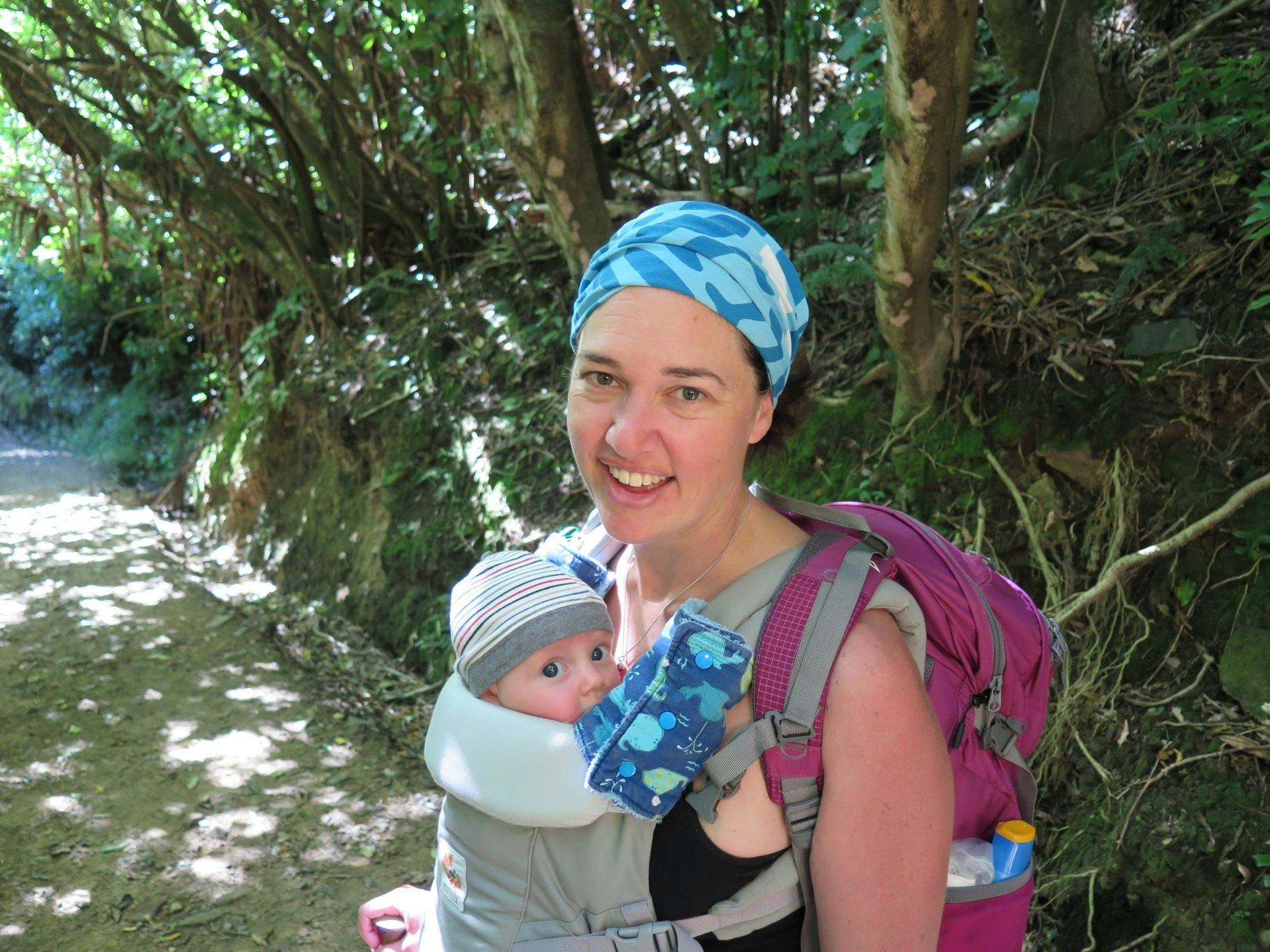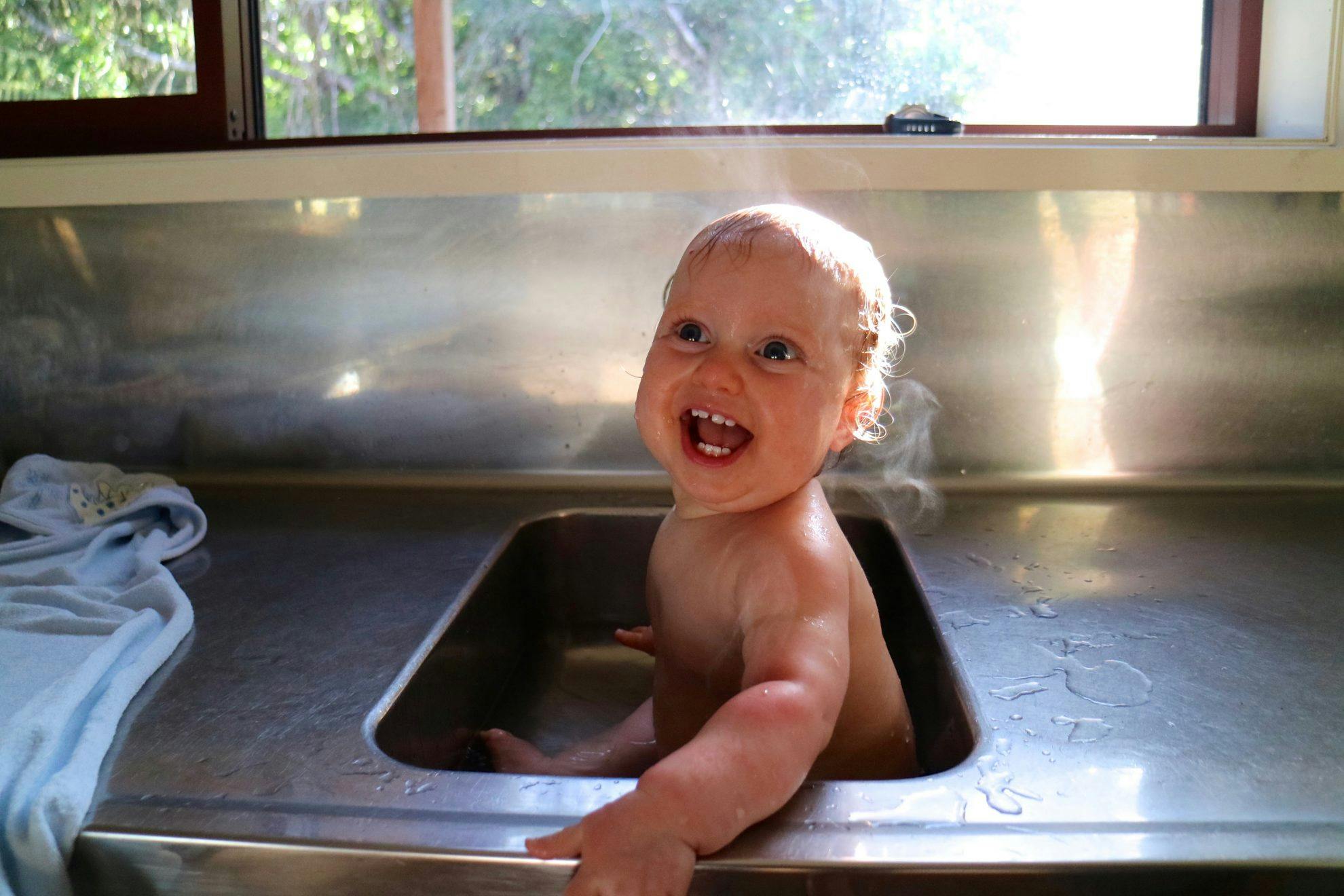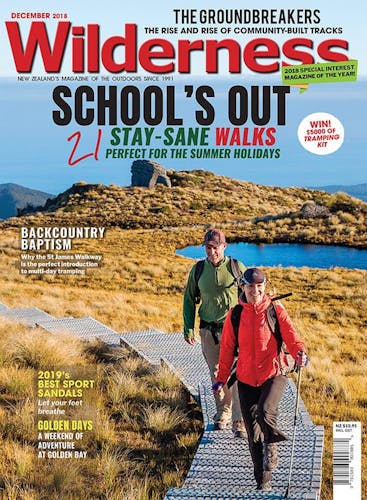New mum Katy Glenie hasn’t let her newborn baby stop her from doing some serious ‘active relaxing’
At eight months pregnant, I was sipping tea in a café with three new and similarly-afflicted friends. We were discussing how babies were going to change our lives. One of the mamas-to-be asked me what I did to relax.
“Tramping,” I replied. “The multi-day, backcountry kind.”
Her face took on a look of deep concern. “So you’re an active relaxer, then?”
Ah, the lure of the backcountry, far from those ever-increasing madding crowds. The perfect balm for an active relaxer. The front country will do at a pinch – particularly if it includes bagging a new hut. But the best release from nine to five drudgery is one of those great long South Island epics. No jandal-clad selfie stick snappers, no boombox backpacks, just the birds, the rivers, the mountains, and me.
How was this going to fit with my new life as a mum? The internet was surprisingly bare of overnight hiking tips for new mums, and most of my tramping friends were child-free. The stress of it all kept me up at night, drove me to more active relaxing (puffing heavily up short flights of stairs).
Then Rosie arrived. The haze of feeding, sleeping, crying, and 3am Facebook messages fell over our house. The gear cupboard grew an actual cobweb. My active relaxing morphed into buggy-walks around the streets of Ngaio in Wellington.
But the sun was shining, the summer was unusually long, and my softened feet were being drawn back towards those Vibram soles. We started slow with our baby ventures – an hour in Otari-Wiltons Bush, three hours to Butterfly Creek, a sweaty climb up Mt Kaukau.
Then out came the maps. We looked for a hut between two and three hours walk from the road-end that wasn’t too much of a drive from home. Timing was everything – any trip needed to be scheduled around nap times, feed times, and grumpy times.
My finger landed on a cluster of huts on Orongorongo River in the Remutakas. The road end was a 45 minute drive away and the two hour track to the river was described by DOC as ‘family friendly’. Perfect.
Time to assess the gear list. We needed enough for one dad, one breastfeeding mama, and one unpredictable four-month-old. We laid out the first run-through on the floor. For the multi-day backcountry epics this is when you put all the nice-to-haves back in the cupboard. Not this time. I looked at the pile of gear and began to note down all the things that were still missing. Should we take a baby monitor? What about white noise in case Rosie couldn’t sleep? Did we have enough layers for her if it was cold? I had read somewhere that an umbrella was a good idea for nappy changes in the rain. Were we really thinking of taking an umbrella?
Ok, so maybe I over-thought it all, and maybe we over-packed. But I can tell you we were ready for all possible weather and poo-explosion eventualities. The gear fitted into one full tramping pack (for dad) and one large daypack (for mama). Rosie travelled in style in a baby frontpack.
Our destination was the Tararua Tramping Club’s Waerenga Hut. This is a private hut and you need to book and pay in advance for a bunk. Although you can’t book the whole hut, we were assured that it was unlikely we would have any fellow travellers with us on a Sunday night.
The walk in went much better than expected. Rosie slept most of the way and woke just near the hut. The many day-walkers we passed loved peeking at Rosie in the front pack and were encouraging of our trip. It all felt so easy.
I should have known better. Did I mention that Rosie was a little unpredictable? Once we reached the hut she turned on her witching-hour best, and screamed the place down for over an hour. I was very pleased we were alone. Eventually, another breastfeed and a bath in the sink settled her and she drifted off to sleep.
We breathed a sigh of relief and sat on the deck with our evening meal. The stars shone brightly. A ruru called. We were sure we could hear the faint sound of a kiwi over the burbling river. Active relaxer bliss.
When you take your newborn tramping, you need to be prepared for ups and downs. You will have the same sleep and settling challenges as at home, but without all the usual tools (long drives in the car, buggy walks, blackout blinds). Your little one may also find the new environment both stimulating and overwhelming.
For our family, however, it was worth all the bumps in the trail. Getting back into nature after months of sleepless nights and hormone overload was incredibly restorative. Overnight tramping with Rosie gave me confidence to try more adventures as a family.
I also realised that front country tramping is actually very pleasant. The trails are well maintained, you meet some great people, and sometimes it’s good to slow down.

Track selection
For your first overnight trip, choose a track that is short – two hours is a good starting point. If you have a toddler who is walking, expect the trip to take twice as long as the stated track time. Here are some good options to get started:
North Island
- Peach Cove Hut: One hour from Peach Cove car park, Whangarei Heads
- Lane Cove Hut: Two hours from Campbell Road, Whangaroa
- Mt Heale Hut: Three hours from Whangaparapara Road, Great Barrier Island
- Daly’s Clearing Hut: Three hours from Franklin Road car park, Kaimai-Mamaku Forest Park
- Waihohonu Hut: Three hours from the Desert Road, Tongariro National Park
- Turere Lodge: Two hours from Catchpool Valley car park, Remutaka Forest Park
South Island
- Hidden Falls Hut (on the Hollyford Track): Three hours from Lower Hollyford Road car park, Fiordland National Park
- Speargrass Hut: Three hours from Mt Robert Road car park, Nelson Lakes National Park
- Manson Nicholls Memorial Hut: Three hours from Marble Hill campsite, Lewis Pass Scenic Reserve
- Woolshed Creek Hut: Three hours from Woolshed Creek car park, Hakatere Conservation Park
- Kiwiburn Hut: 1.5 hours from Mavora Road swingbridge, Mavora Lakes / Snowdon Forest Conservation Area
- Aspiring Hut: Two hours from Raspberry Creek car park, Mt Aspiring National Park
- Aparima Hut: Two hours from Dunrobin Valley Road End, Takitimu Conservation Area
Carrying your baby
There are many different baby carriers available. Most local babywearing groups will hire out carriers for a small fee and offer advice about fit and safety.
Carrying everything else
It’s a good idea to share the load with someone when overnighting. Not only will you have a lot more gear, but your core muscles and back will also be weaker after pregnancy. I carried Rosie on my front and a daypack on my back. My husband carried everything else in a full-size pack.
Food
Food is the solution to most baby problems. Even if you are breastfeeding it’s a good idea to take some back-up formula because exercise can reduce your milk supply. Once your baby is eating solids, snacks are the key to a happy day. Take a variety of snacks in large quantities and choose things that can still be eaten once they’ve fallen on the forest floor.
Sleeping
Huts are an easy option for families. Look for one with separate rooms so you can close the door and keep the noise and light out. If this isn’t an option, choose an end bunk on the platform to reduce the risk of baby rolling out of bed in the night. Alternatively, put a mattress on the floor if there is room. We carried a light portacot. It seemed like a crazy idea but actually worked really well. It’s also a good idea to tramp during the week or on a Sunday night if you’re worried about other hut users.
Making it fun
Tramping with other families is a great way to increase the fun-rating for your child. You can play games together, share gear and snacks, and help each other out when needed. Families are also very understanding hut companions. If you’re on your own, the world of nature will provide plenty of entertainment for inquisitive little travellers.







